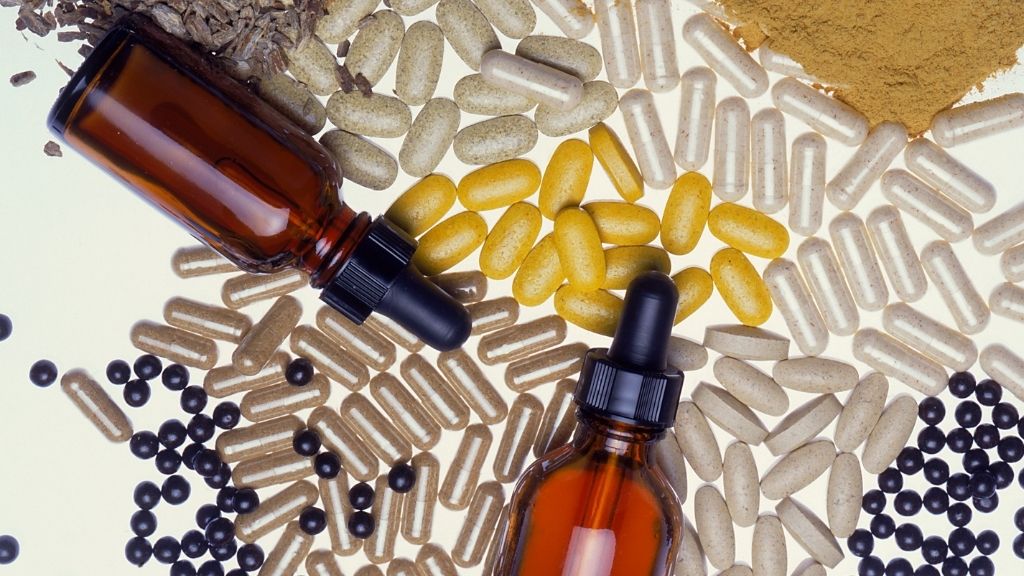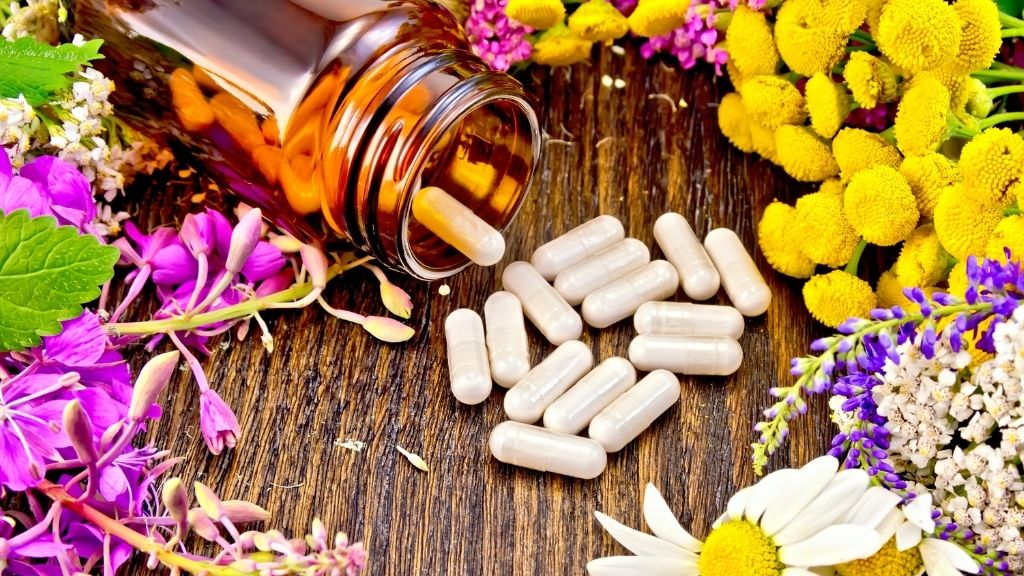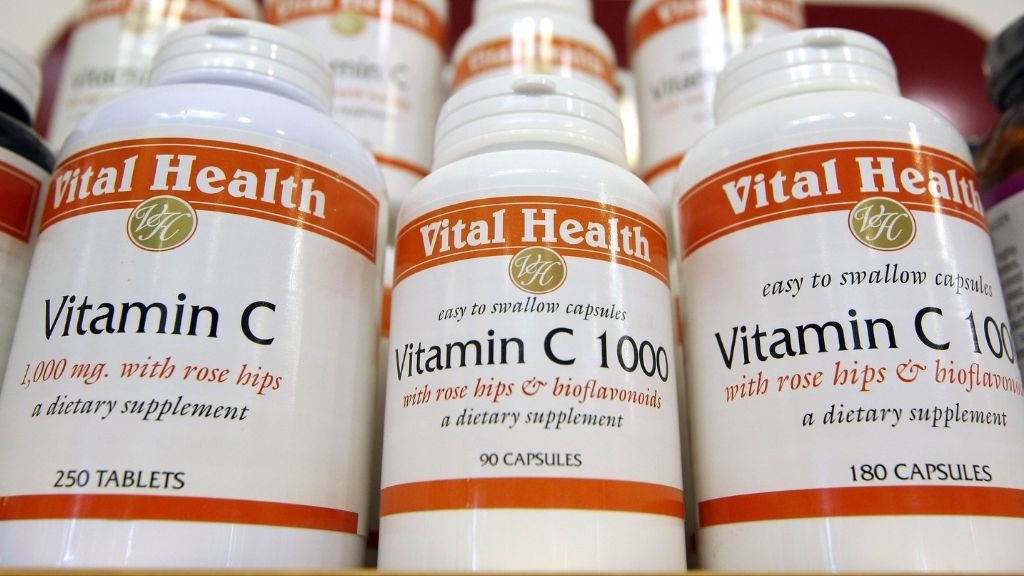Are 'home remedies' for abortion safe? (Experts say no.)
Home remedies for abortion are "really never safe," an expert said.

Following the U.S. Supreme Court's June 24, 2022, decision to overturn Roe v. Wade, people promptly turned to the internet to search for and share "home remedies" for abortion. While some of the trending remedies are relatively harmless, albeit ineffective, others can be extremely dangerous and even life-threatening, experts told Live Science.
Home remedies for abortion are "really never safe," whether they involve herbs, supplements, douching, self-injury or drugs intended for other purposes, Dr. Melissa Simon, a professor and obstetrician-gynecologist at the Northwestern University Feinberg School of Medicine in Chicago, told Live Science. "They're not safe, and we as physicians and clinicians do not recommend any of them."
Dr. Ryan Marino, an assistant professor and medical toxicologist at the Case Western Reserve University School of Medicine in Cleveland, agreed. "There is no 'natural abortifacient' that is safe and effective," he said. The most dangerous of these purported abortion remedies can cause liver and kidney damage, organ failure, seizures, and severe bleeding, scarring or life-threatening infection.
Live Science spoke with Simon and Marino about some of the most commonly shared home remedies for abortion and the potential risks they pose. In addition, we discussed the safest and most rigorously tested option for self-managed abortion: medication abortion, meaning pills designed to induce an abortion early in pregnancy.
Related: Roe v. Wade FAQ: What if abortion rights law gets overturned?
Risk of incomplete abortion
One reason so-called abortion remedies can be dangerous is that they might trigger an incomplete abortion, Simon said. An incomplete abortion is defined as the "partial loss of products of conception within the first 20 weeks of pregnancy," according to the medical database StatPearls; that means that some, but not all, of the tissues that develop after implanation have been expelled from the body. (Note that an incomplete miscarriage is also referred to as an incomplete abortion.)
This condition can cause abdominal and pelvic pain, contractions and moderate to severe bleeding. Potential complications include uterine rupture; severe blood loss leading to hemorrhagic shock; and severe infection leading to sepsis, a life-threatening, whole-body immune reaction. Infection of the uterus, vagina and cervix can also cause permanent scarring and infertility, Simon said.
Get the world’s most fascinating discoveries delivered straight to your inbox.
"It is important to diagnose [incomplete abortion] early to make sure the patient expels all products of conception," according to StatPearls. Some patients don't require any treatment for incomplete abortion, but others require IV hydration, blood transfusions and/or "surgical evacuation" to clear the products of conception.
Dangers of douching
Douching involves using a mixture of fluids to flush out the vagina, and even outside the context of abortion remedies, douching can cause serious health problems. "Douching we never recommend, even for normal vaginal care," Simon said.
Douching can disrupt the bacteria that naturally grow in the vagina and help maintain the acidic environment of the vaginal canal, which helps guard against infection, according to the U.S. Department of Health and Human Services' Office of Women's Health. Douching can raise the risk of vaginal infections, as well as infections of the uterus, fallopian tubes and ovaries. It can also raise the risk of a serious infection known as pelvic inflammatory disease, as well as increase the risk of preterm birth and ectopic pregnancy, where a fertilized egg implants outside the uterus. (Ectopic pregnancies are not viable and are life-threatening for the pregnant person, and their only treatment is termination.)
Douching solutions sold in stores often contain water and either vinegar, baking soda or iodine, all of which can irritate and scar the vagina, thus raising the risk of infection, Simon said, adding that she's seen online "recipes" for douching solutions that call for particularly bizarre or dangerous ingredients, such as flavored sodas or bleach.
Uncertainties of "dietary supplements"
Besides the risk of triggering an incomplete abortion, herbs and supplements purported to induce abortion carry another risk: Consumers can't be 100% sure of the ingredients contained in a given product.
That's because, unlike drugs, "dietary supplements" sold in the U.S. don't have to be proven safe and effective before being put on the market, according to the Food and Drug Administration (FDA); dietary supplements include vitamins, minerals, herbs and other botanicals, among other products. Supplement manufacturers must comply with certain safety standards and labeling requirements, but the FDA mostly upholds these rules through "postmarket enforcement" — after the products have reached consumers — rather than vetting products in advance.
"The problem is, you don't know what you're getting; there's no regulations in place," Marino said. A given product could contain a highly concentrated amount of active ingredient or none at all, he said.
Not only can consumers not be sure of what's in a supplement, but it's also difficult to know whether a new product will agree with other drugs or supplements they're already consuming, Simon said. "There could be a very dangerous interaction" that the consumer might not anticipate if they don't consult a physician first, she said.
Potential risks of common herbal remedies
Pennyroyal
Primary effects are dose-dependent, direct liver & kidney damage, progressing to multi organ failure & death. It is also a known carcinogen (even cigarette companies don’t like it). But does it induce abortion? The human data says not really, not without poisoning the woman first pic.twitter.com/ii437su1cJJune 26, 2022
Of all the purported home remedies for abortion, "pennyroyal is probably the worst one that I'm aware of," Marino said. The herb is purported to induce abortion by irritating the uterus, "but lethal doses are necessary for this to occur, and the effect is inconsistent," according to the Memorial Sloan Kettering Cancer Center (MSKCC).
Pennyroyal refers to two plants in the mint family (Lamiaceae): Mentha pulegium and Hedeoma pulegioides, according to LiverTox, a clinical resource maintained by the National Institute of Diabetes and Digestive and Kidney Diseases. Essential oils derived from pennyroyal plants mostly contain pulegone, a compound that metabolizes inside the body into several potent toxins.
Even small doses of pennyroyal oil can cause fainting, seizures, coma, blood clotting throughout the body, liver and kidney injury, multiorgan failure and death. Other symptoms of pennyroyal poisoning include stomach pain, nausea, vomiting, fever, confusion, vision and hearing problems, high blood pressure and lung failure, according to the National Library of Medicine's MedlinePlus.
In addition to being unsafe to ingest, pennyroyal oil may be dangerous when applied to the skin, according to MedlinePlus. It's unknown if teas made from pennyroyal plants are safe to ingest, but according to MSKCC, there are case reports of multiorgan failure in infants who were given such teas, and liver failure in a woman who likely experienced a dangerous drug interaction after drinking the tea.
Black cohosh
Black cohosh (Actaea racemosa or Cimicifuga racemosa) was historically used as a labor-inducing aid in late pregnancy, according to a 2006 report in the The Canadian Journal of Clinical Pharmacology. However, research on the use of black cohosh in pregnancy is severely limited, and it's unclear how the herb induces contractions — if indeed it does.
Regardless, black cohosh has not been shown to induce abortion, Simon said. Even if it helps induce labor in the third trimester, the uterine environment is very different in the first and second trimesters and the herb would likely have different effects at that stage, she added.
Common side effects of taking black cohosh include mild gastrointestinal upset and rashes, according to the NIH Office of Dietary Supplements. Other side effects can include cramping, headache, and vaginal spotting or bleeding, according to WebMD. About 80 case reports have linked the herb to liver damage, including liver inflammation (hepatitis) and liver failure, but it's unclear whether these effects were caused by the herb itself or impurities and adulterants present in products labeled as black cohosh, the NIH notes.
(A 2006 study published in the Journal of Agricultural and Food Chemistry found that, out of 11 products advertised as black cohosh, three contained no trace of the herb, and one contained a mix of black cohosh and another plant. Among the products that contained only black cohosh, the ratio of active ingredients varied widely, likely due to the manufacturers' use of different extraction techniques.)
Blue cohosh
Blue cohosh (Caulophyllum thalictroides) is not related to black cohosh, but the herb has been similarly used to induce labor in late pregnancy. It may cause heart problems and other serious medical conditions in newborns, according to the NCBI Drugs and Lactation Database.
Blue cohosh contains a compound called N-methylcytosine, which has similar effects to nicotine and may cause similar symptoms to nicotine poisoning, if taken in excess. One case report, published in 2002 in the journal Veterinary and Human Toxicology, described a young woman who, after using blue cohosh, developed a rapid heartbeat, excessive sweating, abdominal pain, vomiting, muscle weakness and twitching — symptoms that are consistent with nicotine poisoning. In extreme cases, nicotine poisoning can cause coma, paralysis and respiratory failure, according to the Cleveland Clinic.
Blue cohosh consumption can also cause diarrhea, chest pain and increased blood pressure, and it may decrease oxygen flow to the heart, according to WebMD.
Wormwood
Wormwood (Artemisia absinthium), perhaps best known as an ingredient in the liquor absinthe, gets its name from its historical use as a treatment for intestinal worms, although the herb has also been purported to treat other digestive conditions and to stimulate menstruation, according to Drugs.com. That said, wormwood contains a chemical called thujone that can trigger "difficult-to-treat seizures" when taken in great enough quantities, Marino said. "It can definitely be very dangerous," he said.
Wormwood consumption has also been linked to kidney failure, vomiting and allergic reactions involving skin irritation and nasal congestion, according to WebMD.
Mugwort
Similar to wormwood, mugwort (Artemisia vulgaris) also contains thujone, a neurotoxin that can cause hard-to-treat seizures if consumed in high quantities, according to Medical News Today. And like wormwood, the herb has been historically used to treat various gastrointestinal ailments and to stimulate menstruation, although there's little clinical research to back these uses.
Tansy
Like wormwood and mugwort, tansy (Tanacetum vulgare) — otherwise known as the common tansy or garden tansy — also contains the neurotoxin thujone, which can cause hard-to-treat seizures if consumed in high quantities, according to North Carolina State University. Tansy can also cause vomiting, severe diarrhea, stomach pain, dizziness, tremors, kidney or liver damage, and bleeding, according to WebMD.
Rue
Like other herbs in the list above, rue (Ruta graveolens) has been purported to stimulate menstruation and induce abortion, but it carries a risk of serious side effects, according to Drugs.com.
Consuming high doses of rue can cause kidney damage, liver inflammation, severe gastric pain, vomiting, breathing problems and death, according to Drugs.com and WebMD. In addition, skin contact with rue can cause photodermatitis, an allergic reaction in which the skin breaks out in itchy bumps and blisters upon exposure to ultraviolet light.
Other herbs, foods and supplements
While some abortion remedies are toxic to users, others are relatively benign. For example, some people claim that taking large doses of vitamin C (ascorbic acid) can induce abortion, but this claim is based on weak research published in 1966; modern studies of vitamin C use in pregnancy show that the vitamin does not increase the chance of miscarriage or affect the pregnancy in any way, according to Healthline.
That said, if consumed in high enough doses, vitamin C can cause diarrhea, nausea, abdominal cramps and other gastrointestinal disturbances, according to the NIH. Excessive vitamin C intake may also raise the risk of developing kidney stones, although the vitamin's exact role in kidney stone formation remains unclear. "Vitamin C is very hard to have toxicity from, but you definitely can," Marino told Live Science.
A quick scroll through TikTok and other social media platforms will turn up other seemingly benign abortion remedies, including cinnamon, papaya, parsley, ginger and figs, none of which have been shown to induce abortion. These spices and foods are safe to consume in moderation, but if attempting to induce an abortion, people might eat these products in excessive quanities, or else try to insert or inject substances into their bodies, which could be dangerous, Marino said.
Eating too much cinnamon, for instance, can cause liver damage, according to Healthine, and apiol, an essential oil in parsley, can cause liver and kidney damage when taken in high doses, according to the National Library of Medicine.
The safest option: Medication abortion
The safest and most rigorously tested method for self-managed abortion — meaning an abortion induced outside a medical setting — is known as medication abortion, Simon said.
Medication abortion involves taking abortion pills called mifepristone and misoprostol; either these drugs are taken in combination, or misoprostol is taken by itself, according to the World Health Organization (WHO). (Note that Plan B and similar forms of emergency contraception are not abortion pills.)
The combination regimen involves taking mifepristone orally, waiting 24 to 48 hours, and then taking misoprostol by placing the pill in the vagina, under the tongue or in the cheek, the WHO states. Mifepristone blocks the hormone progesterone, which is required to maintain pregnancy, and misoprostol induces contractions, which can trigger bleeding, uterine cramping and pain, similar to a miscarriage, according to Whole Woman's Health.
The FDA has approved the use of mifepristone (brand name Mifeprex) and misoprostol within 10 weeks of the person's last menstrual period. As of 2021, the agency has allowed people to receive these medications by mail, rather than needing to get them in person from a health provider at a specialized clinic, The New York Times reported. Providers can prescribe the pills and mail them after a telemedicine appointment with the patient.
Patients can access such telehealth services through the Planned Parenthood website, as well as through European organizations such as AidAccess, Simon said. In addition to undergoing an initial telehealth consultation, patients should ideally be able to access a medical provider throughout their abortion so they can check in and ensure that the procedure is proceeding normally, she said.
"Medication abortion is a safe and highly effective method of pregnancy termination," according to the Kaiser Family Foundation. If administered by the ninth week of pregnancy, "the pregnancy is terminated successfully 99.6% of the time, with a 0.4% risk of major complications, and an associated mortality rate of less than 0.001 percent (0.00064%)."
Several states restrict at-home access to abortion pills; to see which states, check the Kaiser Family Foundation website.
Additional resources
Visit ineedanA.com to find an abortion clinic in the U.S. Abortion funds and other resources can be found at abortionfunds.org and apiarycollective.org. People seeking support for managing a miscarriage or abortion can visit mahotline.org. For counseling about all your pregnancy options, visit all-options.org/find-support/talkline/. For questions about legal rights and self-managed abortion, visit www.reprolegalhelpline.org.
This article is for informational purposes only, and is not meant to offer medical advice.
Originally published on Live Science.

Nicoletta Lanese is the health channel editor at Live Science and was previously a news editor and staff writer at the site. She holds a graduate certificate in science communication from UC Santa Cruz and degrees in neuroscience and dance from the University of Florida. Her work has appeared in The Scientist, Science News, the Mercury News, Mongabay and Stanford Medicine Magazine, among other outlets. Based in NYC, she also remains heavily involved in dance and performs in local choreographers' work.




